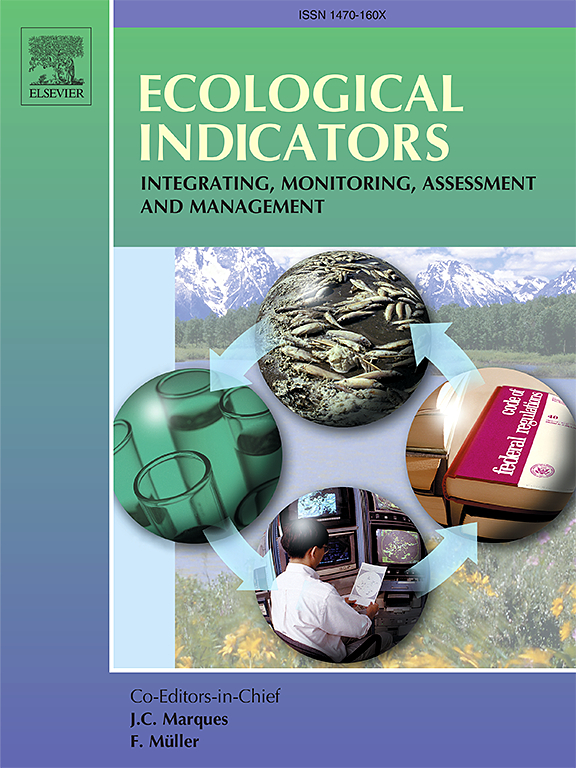环境健康空间脆弱性指数
IF 7
2区 环境科学与生态学
Q1 ENVIRONMENTAL SCIENCES
引用次数: 0
摘要
极端自然灾害的频率和强度都在增加。我们环境中的这些自然变化,加上人为污染,对全球经济、社会和健康产生了重大影响。在国际研究文献中,环境对人类健康(环境健康)的影响已得到很好的理解。然而,在理解这种影响的关键特征方面存在重大障碍,这些特征与大量数据量、数据访问权以及按区域和时间汇编和比较数据所需的时间有关。本研究开发了一种可复制的方法来构建由观察到的全因死亡率加权的脆弱性指数,并将其应用于三种环境危害:极热、极冷和空气污染。在多个空间(SA2、SA3、SA4、LGA)和时间(周、月、年)分辨率下生成指数,实现了人口脆弱性随时间和空间的细粒度分析。我们将死亡率加权指数与等权重和主成分分析(PCA)方法进行了比较,尽管它们被广泛使用,但并不直接纳入或与观察到的健康结果一致。使用基于全因死亡率的经验权重得出的指数将与其他正相关的健康结果很好地一致,因此增加了指数的普遍性,同时减少了对在实践中难以获得的一套全面结果数据的要求。相对于单独优化统计方差(如PCA)的方法,死亡率加权方法提高了可解释性。纳入时间序列数据和分年度指数进一步揭示了脆弱性的短期波动,而这些波动在较粗略的时间研究中被掩盖了。这些结果共同支持一个透明和可扩展的框架,以确定人口脆弱性并为有针对性的公共卫生和气候适应能力战略提供信息。本文章由计算机程序翻译,如有差异,请以英文原文为准。
A spatial vulnerability index for environmental health
Extreme natural hazards are increasing in frequency and intensity. These natural changes in our environment, combined with man-made pollution, have substantial economic, social and health impacts globally. The impact of the environment on human health (environmental health) is becoming well understood in international research literature. However, there are significant barriers to understanding key characteristics of this impact, related to substantial data volumes, data access rights and the time required to compile and compare data over regions and time.
This study develops a replicable method for constructing vulnerability indices weighted by observed all-cause mortality and applies it to three environmental hazards: extreme heat, extreme cold, and air pollution. Indices were produced across multiple spatial (SA2, SA3, SA4, LGA) and temporal (weekly, monthly, yearly) resolutions, allowing fine-grained analysis of population vulnerability over time and space. We compare the mortality-weighted indices with equal-weight and principal component analysis (PCA) approaches, which, despite their widespread use, do not directly incorporate or align with observed health outcomes. An index derived using empirical weights based on all-cause mortality will be well-aligned with other positively correlated health outcomes and so increases the generality of the index while reducing the requirements for a comprehensive suite of outcome data which can be difficult to obtain in practice.
The mortality-weighted approach improves interpretability relative to methods that optimise statistical variance alone, such as PCA. The inclusion of time-series data and sub-yearly indices further reveal short-term fluctuations in vulnerability that are otherwise obscured in coarser temporal studies. Together, these results support a transparent and scalable framework for identifying population vulnerability and informing targeted public health and climate resilience strategies.
求助全文
通过发布文献求助,成功后即可免费获取论文全文。
去求助
来源期刊

Ecological Indicators
环境科学-环境科学
CiteScore
11.80
自引率
8.70%
发文量
1163
审稿时长
78 days
期刊介绍:
The ultimate aim of Ecological Indicators is to integrate the monitoring and assessment of ecological and environmental indicators with management practices. The journal provides a forum for the discussion of the applied scientific development and review of traditional indicator approaches as well as for theoretical, modelling and quantitative applications such as index development. Research into the following areas will be published.
• All aspects of ecological and environmental indicators and indices.
• New indicators, and new approaches and methods for indicator development, testing and use.
• Development and modelling of indices, e.g. application of indicator suites across multiple scales and resources.
• Analysis and research of resource, system- and scale-specific indicators.
• Methods for integration of social and other valuation metrics for the production of scientifically rigorous and politically-relevant assessments using indicator-based monitoring and assessment programs.
• How research indicators can be transformed into direct application for management purposes.
• Broader assessment objectives and methods, e.g. biodiversity, biological integrity, and sustainability, through the use of indicators.
• Resource-specific indicators such as landscape, agroecosystems, forests, wetlands, etc.
 求助内容:
求助内容: 应助结果提醒方式:
应助结果提醒方式:


